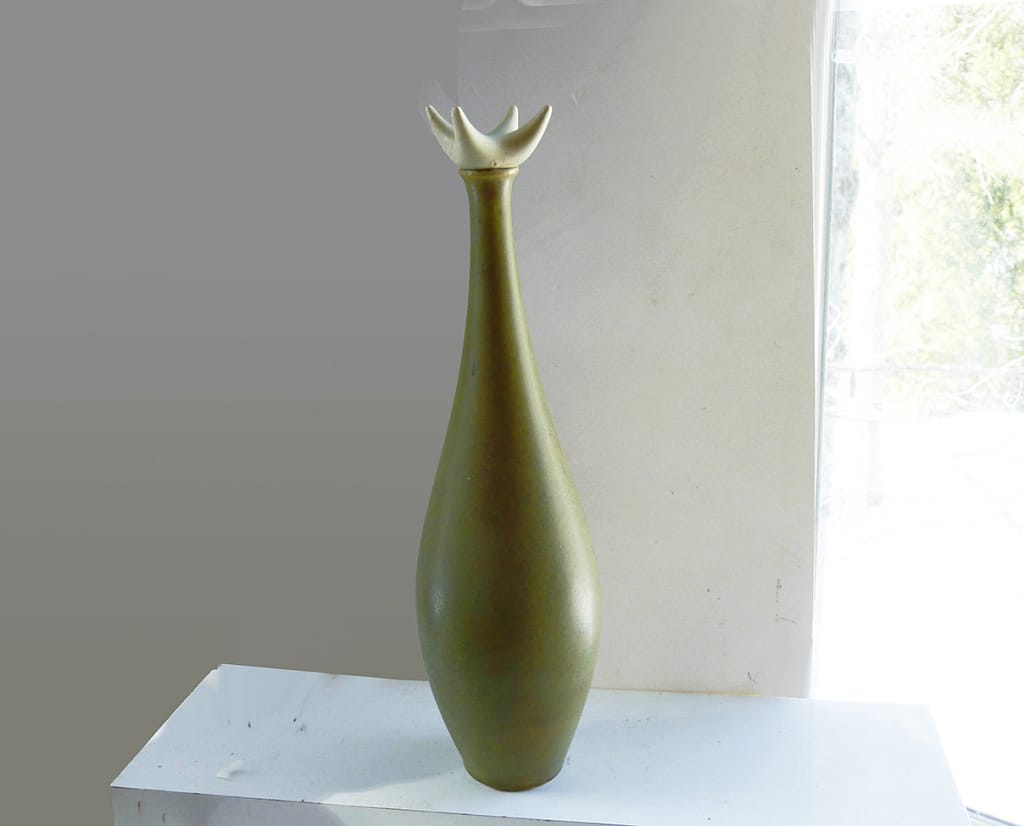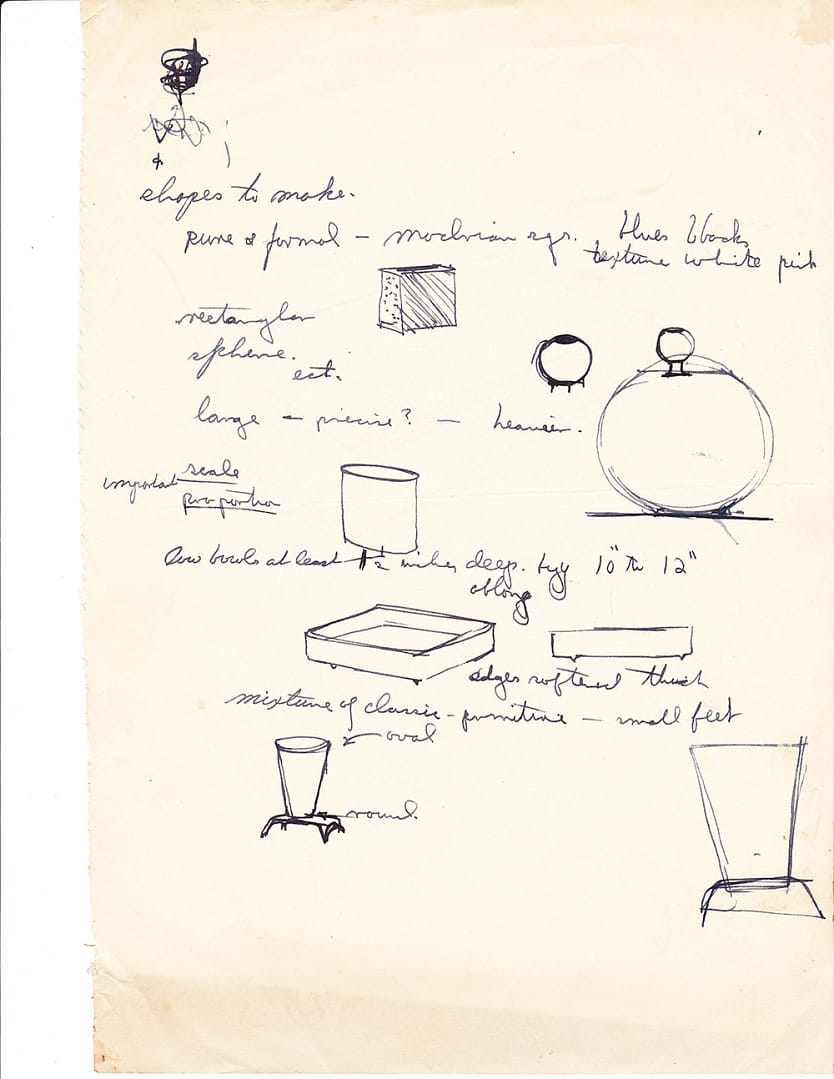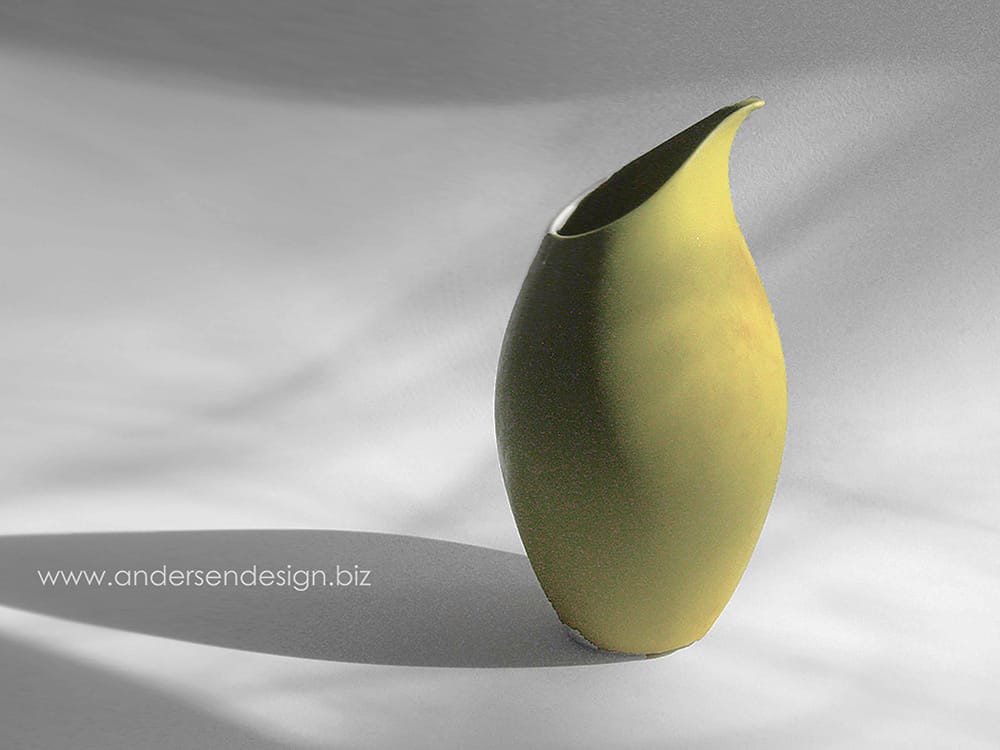

In the year 1952. Weston Neil Andersen and his wife, Brenda, founded Andersen Design. The business development was as handcrafted as the products it produced. I credit the “can-do” philosophy to my father’s roots in the farming culture. Farmers are very independent, self-reliant entrepreneurs. They grow things from the roots up and depend on the grace of natural forces for their fortunes. Andersen Design was born, with a modest small business loan, self-capitalization, and a commitment to a vision which took 15 years to establish on a sure footing. Faith kept it all together.
Weston created his first ceramic sculptures out of the clay he dug out of the earth on the Iowan Farm sometime in the 1920s when he was still a puppy himself.
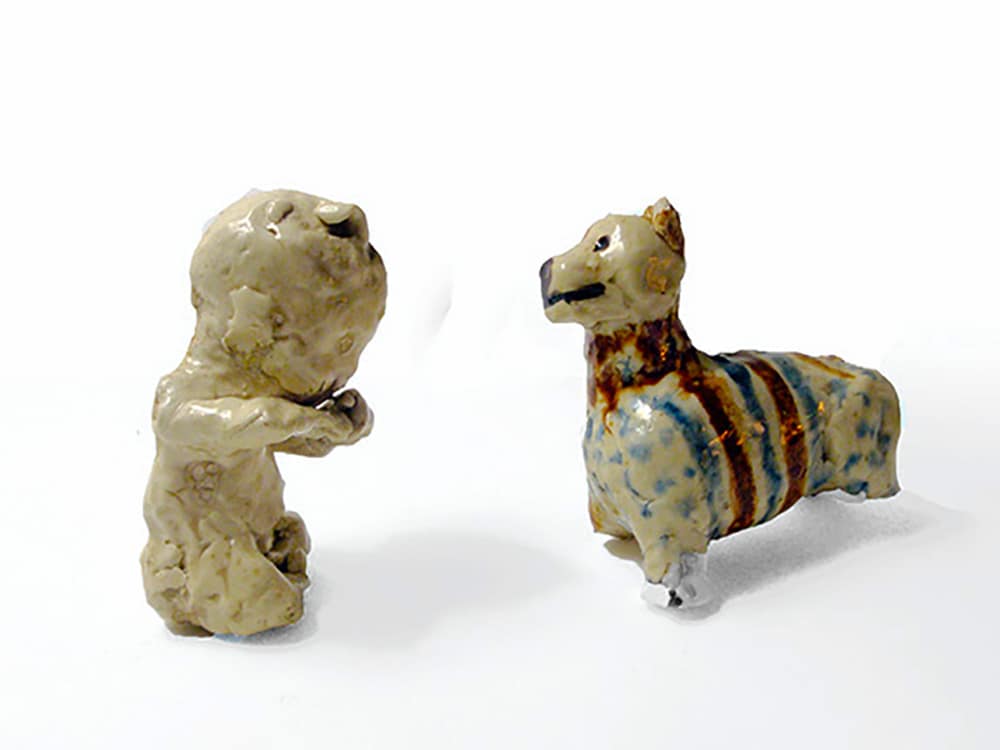
By the time the 1930s rolled around, Weston was reading Scientific American and became inspired by a new field called industrial design. Automobiles were the new technology of the day. Weston sketched many automobile designs, which were futuristic for their time, some even so today
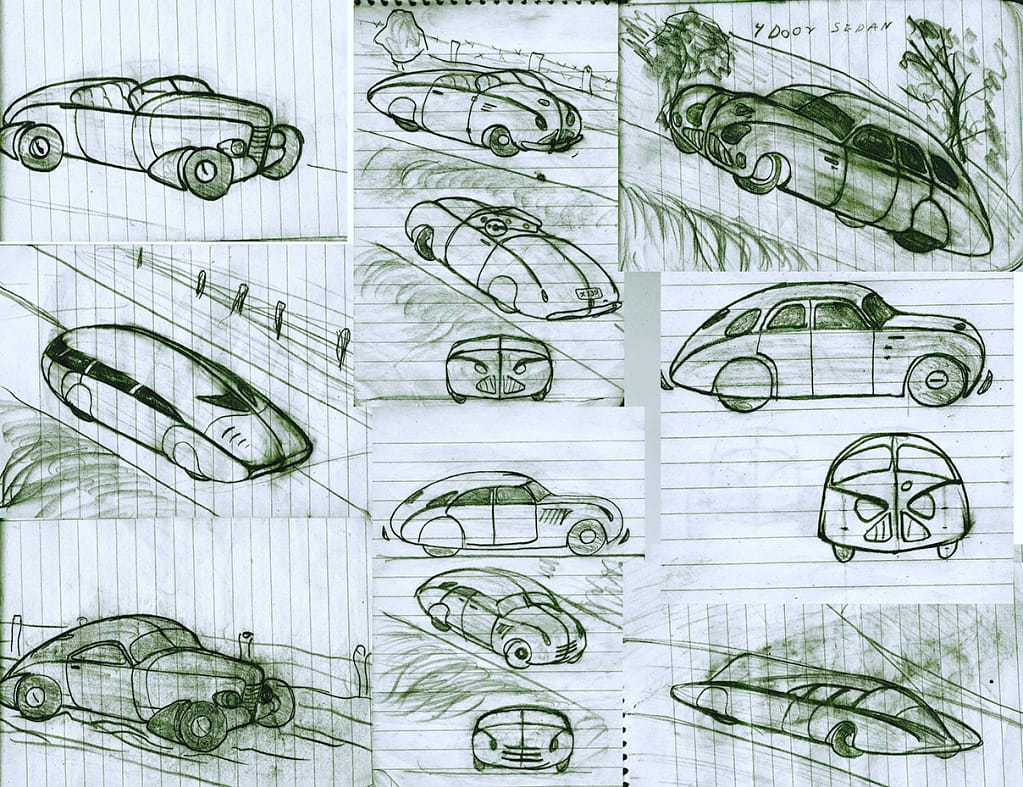
Weston applied and was accepted to study industrial design at Pratt Institute in Brooklyn, New York. Eva Zeisel was teaching the first known class on ceramics as industrial design, featuring the slip casting technique. However, before his college education was completed, World War II broke out, and Weston answered the call of duty.
My mother, Brenda, was raised in Trafalgar Square in London in a home of modest means, but her talent provided a scholarship to the Royal College of Art. It was the 1940s, and daily bombing was the norm of my mother’s existence when she met the young American soldier who would become her husband.
Dad was stationed in London, employed by the military in designing bombs, but he had another interest as well; he salvaged the crates in which materials were shipped and used them to build a sports stadium.
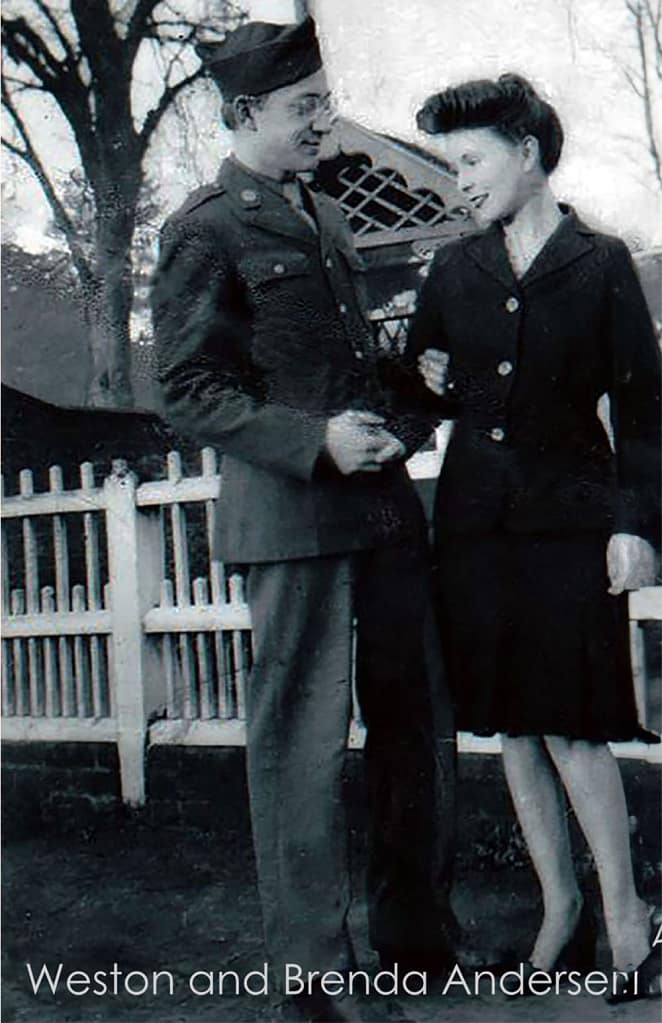
Weston met Brenda at a ballroom dance in the middle of World War II. Together, they started a company called Andersen Design, known for its ceramic functional forms and wildlife sculptures. They figured out how to create the business on their own.

I did not fully appreciate the talent required to realize the daily operations of such a business until my father was in his eighties and fell and suffered a brain injury. I went to visit Dad in the hospital and found him muttering about “system management” and “fishermen”. In that moment, I realised that system management was a talent Dad possessed in great measure. He was using it to system manage his own brain recovery. As with the sun in the sky, I had taken for granted the ground out of which everything else grew because it was always a part of my existence. What a remarkable feat it was, just as remarkable as what he was then doing- putting his own brain back together. In the new configuration, the expression of his intellect was impaired by an inability to easily connect the subject and object of a sentence. Where once the intellect was primary, the heart predominated. This did not stop Dad’s thinking process as he thereafter spent most of his time in a state of deep contemplation:
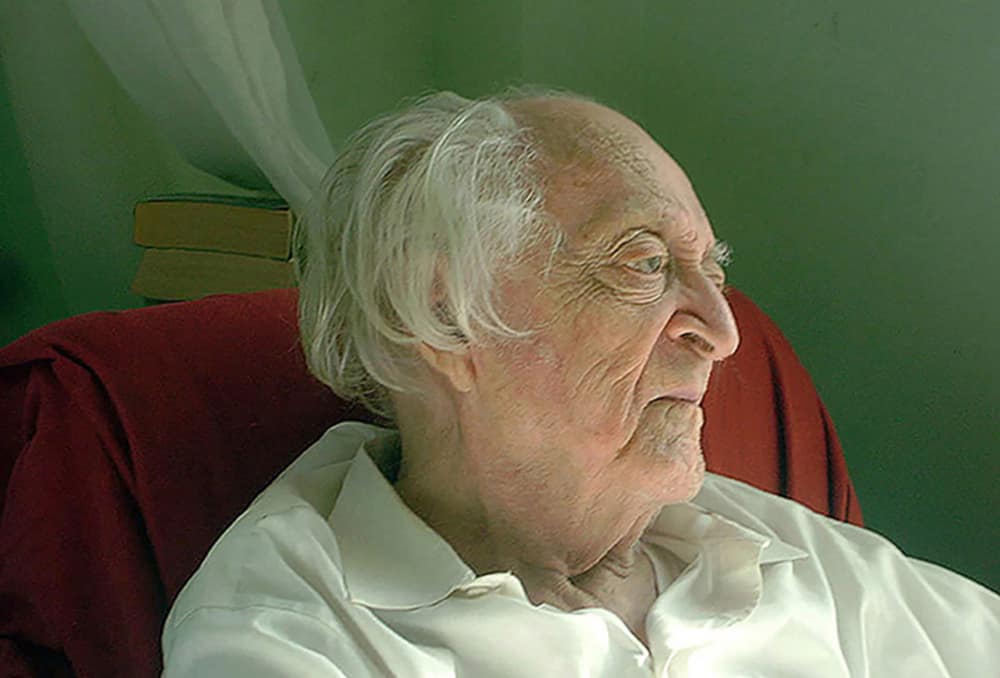
Instantaneously, I connected fishermen with Christianity, having read Philip K Dick’s novel Valis, a novel which Philip K Dick tells us from the onset is a true story, but since no one would believe it. he is writing as fiction. The main character in the novel experiences Rome at the time of Christ, superimposed on California in the 1970s. Fish and fishermen are frequently used as ancient symbols of Christianity. Dad hadn’t read Valis, but he seemed to be on the same wavelength.
In the late 1940s. In starting a business from scratch, Weston began by sketching a line of functional forms. The first sketches were very loose:
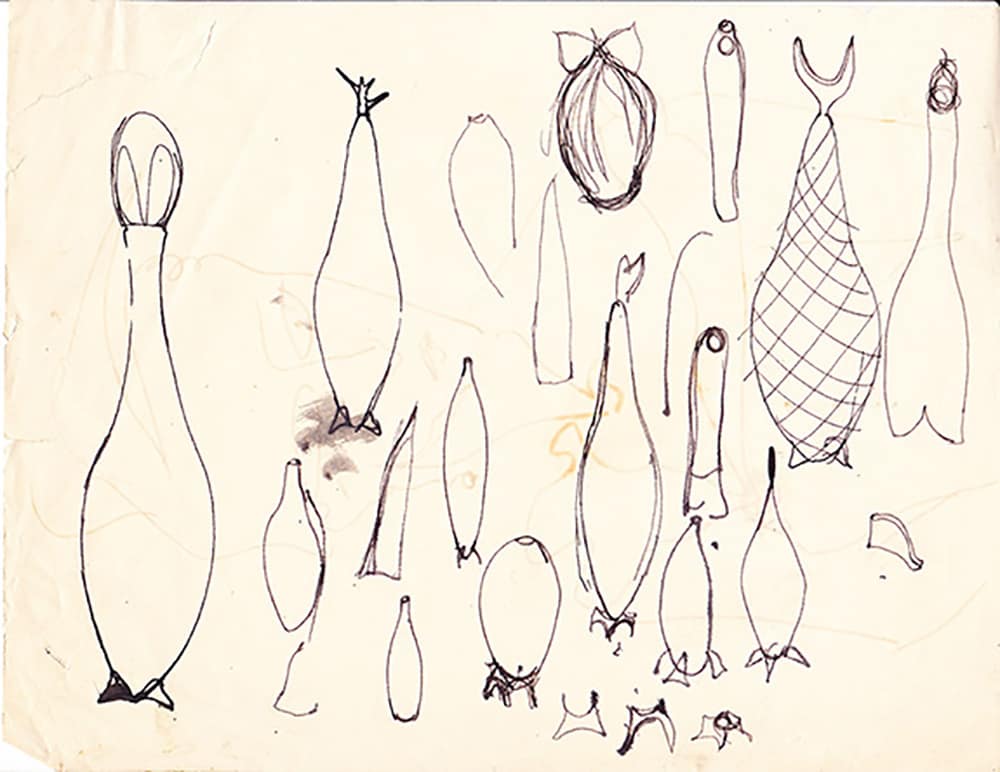
The sketches became more refined. The objects, inter-relational.
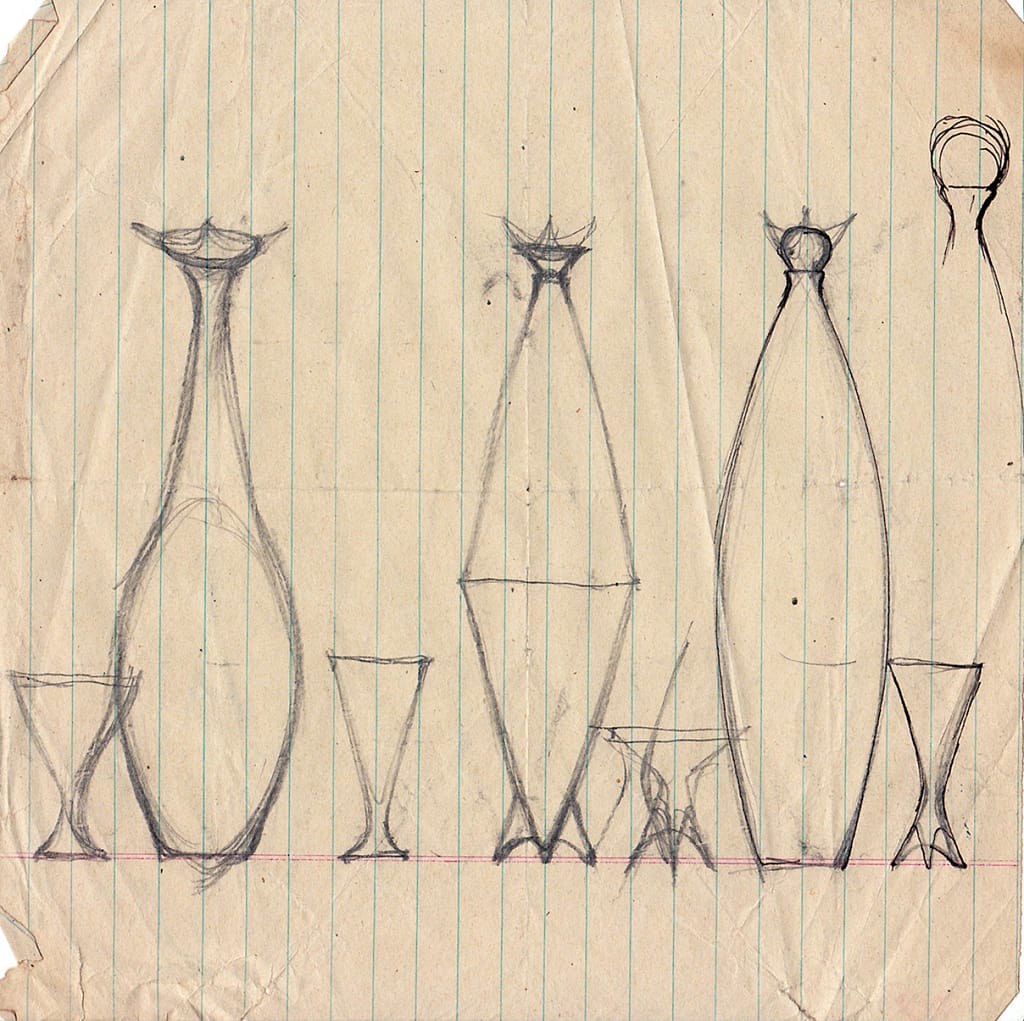
During this time, Weston was employed as Dean of the Akron Art Institute, where he had access to a state-of-the-art ceramic facility. The drawings became a group of slip-cast ceramic forms with glazes designed by Weston, as he developed his ideas. This small group of forms launched an original hand-built American business, creating handcrafted ceramics in America. The items in the Ohio collection are very rare. Some are one of a kind, others are prototypes of forms cast in porcelain and finished in individualistic glazes as Weston explored the art of glaze making in the process, leading up to the Andersen signature look, which relies on unique glazes and decorating techniques as much as it is about the beauty of form.
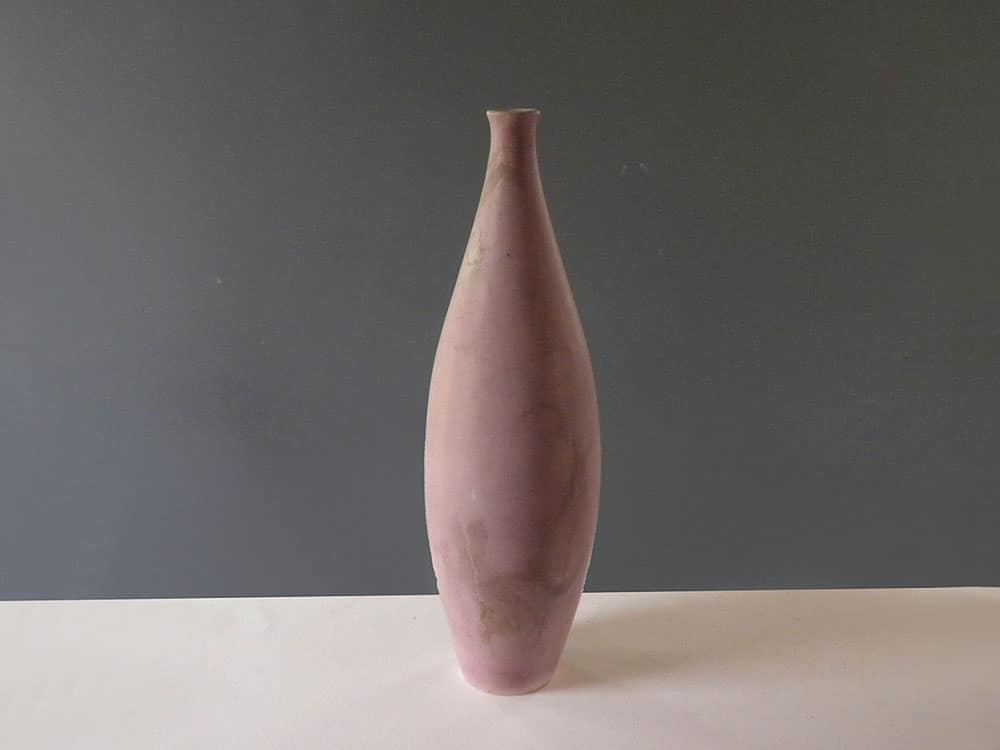
Above is a very simple, very early, one-of-a-kind vase by Weston Neil Andersen in subtle, sophisticated pink. The mottled coloration was created in a one-of-a-kind house firing when the ceramics were stored in the attic. The mottled coloration from the house firing merges into the Andersen naturalistic style. The decanter is 12 inches high and 3.5 inches in diameter.
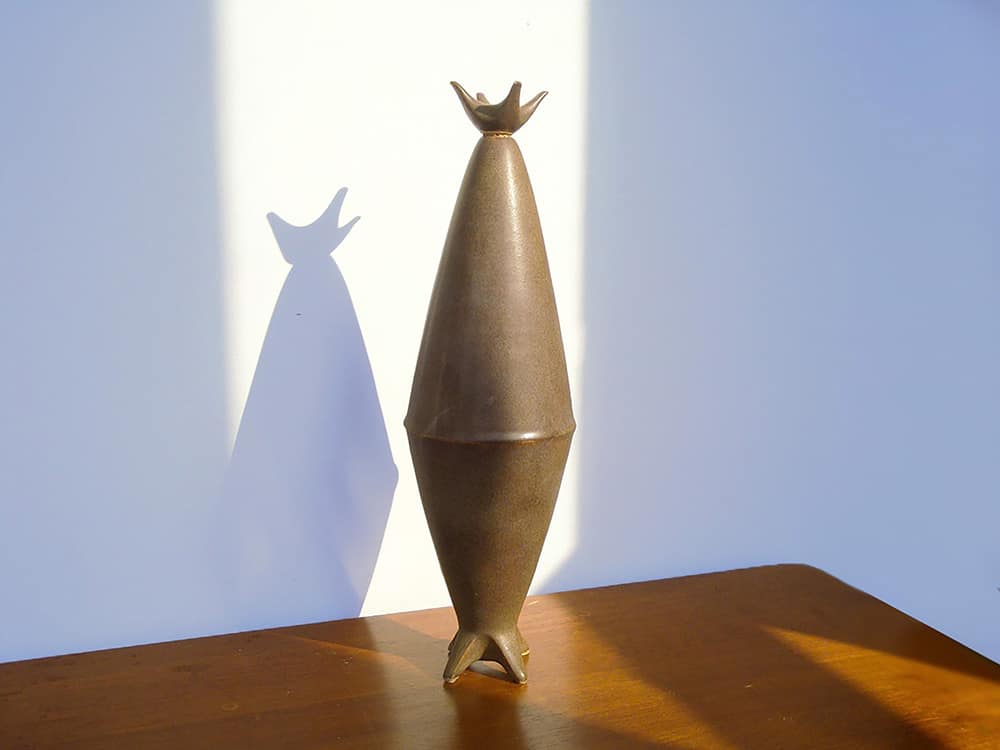
We call this the Rocket Vase. This is the only known cast of this is a prototype design created by Weston in Ohio in a rare brown glaze. The Rocket Decanter is 12 inches tall and 4 inches in diameter.
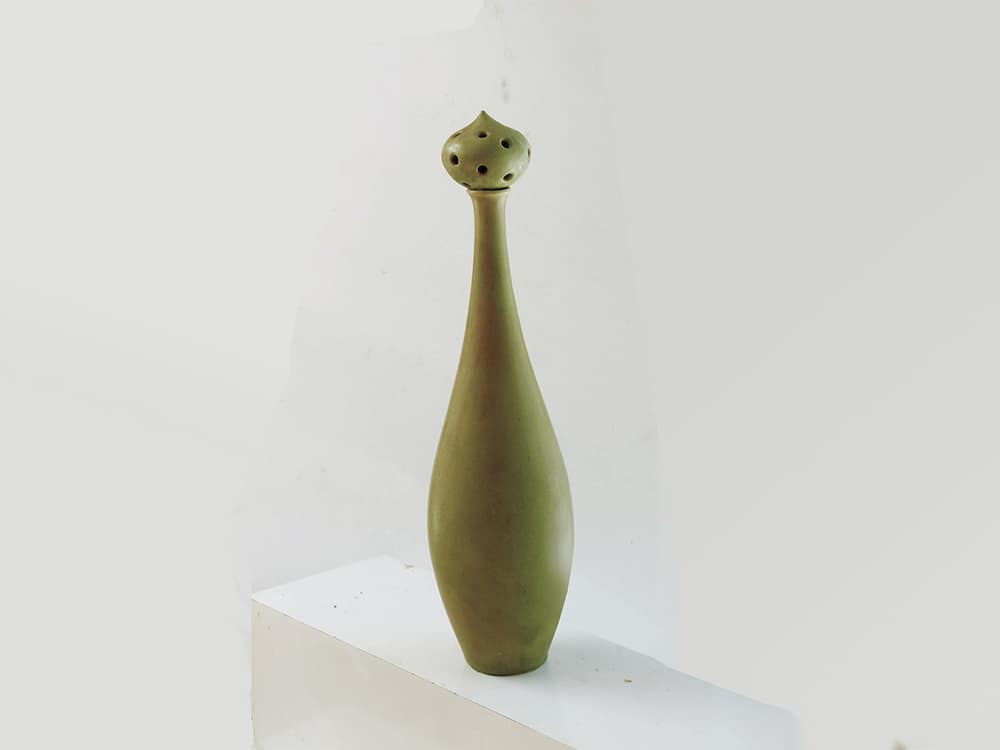
Vintage Prototype by Weston Neil Andersen from the Ohio period. This wine decanter is the form chosen for the production line, which established Andersen Design of Maine. The handcrafted glaze in a shade of rich yellow-green is perfectly applied. The decanter is topped with a Ruski Crown. The crown is carved with a pattern of open round holes and dipped in a glaze matching the decanter. The decanter is 12 inches high and 3.5 inches in diameter.
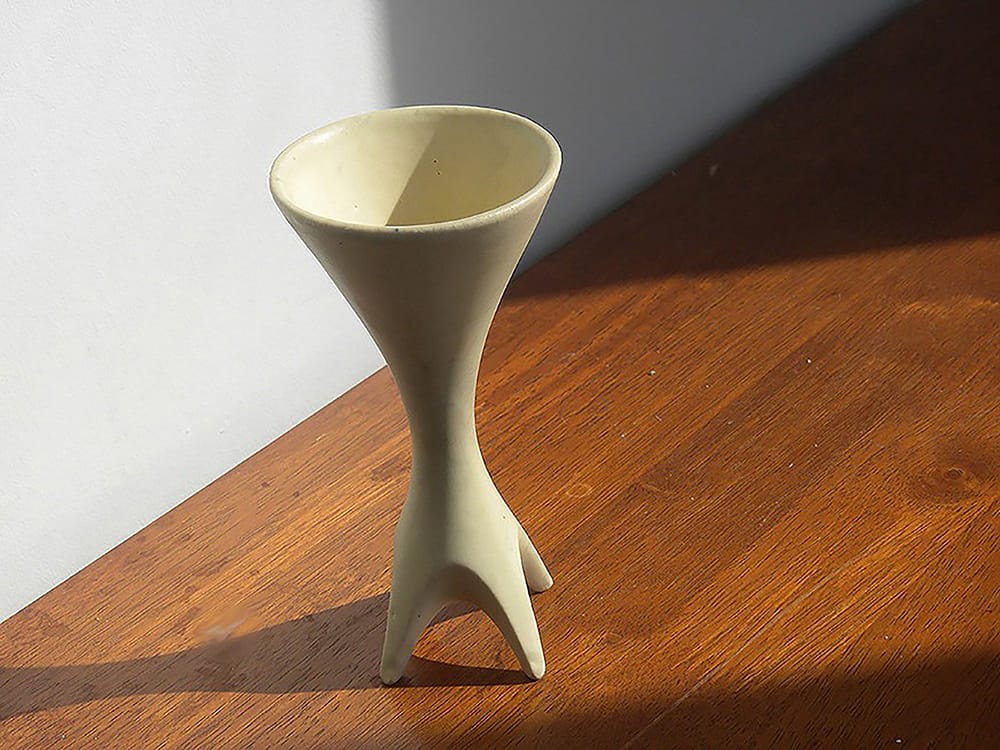
This is one of my favorite pieces. Who wouldn’t want a four-footed wine glass? The material and the form complement each other as a unique sensual experience. This is one of the original prototypes that Dad designed in Ohio. It was never selected as a production line item. Perhaps it was ahead of its time, but it seems perfect for today’s market. It is the only known cast of this design and is priced accordingly. These items are priced for the one-of-a-kind art object collectibles market as part of our project to raise capital and establish a new production and training facility for Andersen Design.
When Weston designed these prototypes, his mission was to create a handcrafted product affordable to the middle class, made in the USA. Andersen Design was always committed to being made in America. The unique mission is a natural fit for a company started by an artist-philosopher and his wife.
Throughout his life. Weston questioned whether he should not have taken a different path and designed for an established name instead of starting his own “factory”. I have always felt that Dad felt most comfortable in the world when he was connected to his farmer’s roots. Farmers have to love the process. In the case of growing small, intimate, and independent things, be it a plant or a ceramic art, design, and production studio, the old song rings true. Love makes the world go round. You have to love the process, as my Dad did, for it to succeed. A ceramic production studio intimately attached to a home is a close relative of the family farm. Both processes begin with the raw materials. My father loved to tell of watching the farmers leaning against the fence, talking the talk, as they sifted the dirt in their hands.
Work from our Vintage Collection is found online at Andersen Design Vintage and Special Editions, priced to sell at a modest price in the high-end market of historical and one-of-a-kind art object collectibles as part of a project to raise funds for a state-of-the-art production and training studio.
